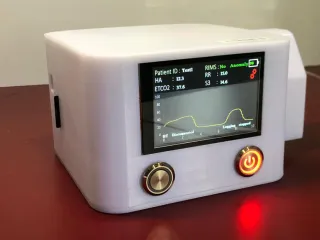Description
"Technical Field" Here we describe a novel formulation for a two-step etch-and-rinse adhesive for teeth filling, based on an antimicrobial and potent collagen crosslinking agent (tooth therapy), which combines antimicrobial activities and protease inhibitory properties without interference to bonding capabilities. The formulation of a novel dentin adhesive modified with both antimicrobial and collagen crosslinking compounds resulted in unique combination of antimicrobial, anti-proteolytic effects, and collagen crosslinking effects. The setting of the adhesive was adequate within clinical settings. Bond strength of adhesive to teeth increased significantly after storing adhesive with teeth. The adhesive is not cytotoxic to pulp stem cells and is biologically compatible and easy to use on human teeth. - Provide a strong, immediate, and permanent bond to tooth structure - Seal the dental cavity and minimize leakage problems - Resist microbial or enzymatic problems in teeth - Provide adhesion per se of the restoration in cases where this is necessary - Prevent post-operative sensitivity in patients - Reduce the risk of recurrent dental cavities - Prevent staining in margins of cavities - Easy to use.
Highlights
Adhesive restorations are expected to function in a harsh oral environment. Several factors have been associated with this weakening of the hybrid layer, including occlusal and (or) thermal stresses, chemical attacks, and different enzymes, compromising the integrity of the resin dentin interface. Other contributory factors to the degradation process of this interfacial junction are secondary caries, exposure to water, and biofilm formation. Enzymatic degradation of the collagen matrix by host derived enzymes, namely matrix metalloproteinases (MMP's) and cysteine cathepsins are repeatedly held responsible for digesting the collagen fibrils exposed at the adhesive interface. The collagen degradation leads to uncoiling of the fibrils into gelatin and loss of the typical helical ultrastructure and fragmentation. Conventional adhesive systems allow immediate bonding to tooth structure via polymerization without requiring aggressive cavity preparations. However, it does not prevent degradation of resin-dentin interfaces, which leads to a reduction in long-term clinical success of adhesive restorations. However, the result is inconsistent due to replacement of residual water volume is difficult to achieve in an etched dentin; hence, the hybrid layer is always considered as an inherently weak link of the bonded interfaces. The present invention relates to an adhesive composition for dental treatment, more particularly to an adhesive composition comprising an antibacterial and crosslinking additive, a monomer adhesive and a photoinitiator material. In addition, the present invention relates to a method of preparing the adhesive composition for dental treatment including a dentin adhesive. It is also an objective of this invention to provide an adhesive composition for dental treatment that made up of a crosslinking additive comprising a quaternary ammonium compound (QAC) bonded with a riboflavin, a monomer adhesive, and a photoinitiator material. The present invention relates to an adhesive composition for dental treatment characterized by a crosslinking additive comprising a quaternary ammonium compound bonded with a riboflavin; a monomer adhesive; and a photoinitiator material. More particularly, the crosslinking additive is having 1 % concentration, in which the quaternary ammonium compound and the riboflavin are having a ratio of 1:1. Further, the quaternary ammonium compound is dioctadecyldimethyl ammonium bromide, while the photoinitiator material comprises camphorquinone, ethyl (4-dimethylamino) benzoate and diphenyliodonium hexafluorophosphate. Further, the present invention also relates to a method of preparing an adhesive composition for dental treatment, characterized in that the method comprising the steps of preparing the crosslinking additive; mixing the crosslinking additive with the monomer adhesive and the photoinitiator material to obtain a mixture; adding 14 % water into the mixture; and initiating photopolymerization of the crosslinking additive to obtain the adhesive composition. Thus, it is possible to increase the resistance of dentin collagen to endogenous proteases in addition to cross-linking proteoglycans as glycosaminoglycans are essential for cathepsin-k activities. Including QARF compound at a concentration of 1% within the adhesive may provide a long-term antimicrobial effect and simultaneously cross-linking dentin matrix for clinicians to compare the results with any other modified adhesives or pre-treatments.
Contact Person/Inventor
| Name | Contact Phone | |
|---|---|---|
| Fatimah Binti Muhammad | FatimahMuhammad@imu.edu.my | 60129497196 |
Award
| Award Title | Award Achievement | Award Year Received |
|---|---|---|
| International Innovation Awards | MTE 2023 | 2023 |
Event Participation
| Event Name | Event Year |
|---|---|
| Malaysia Technology Expo | 2023 |











Comment